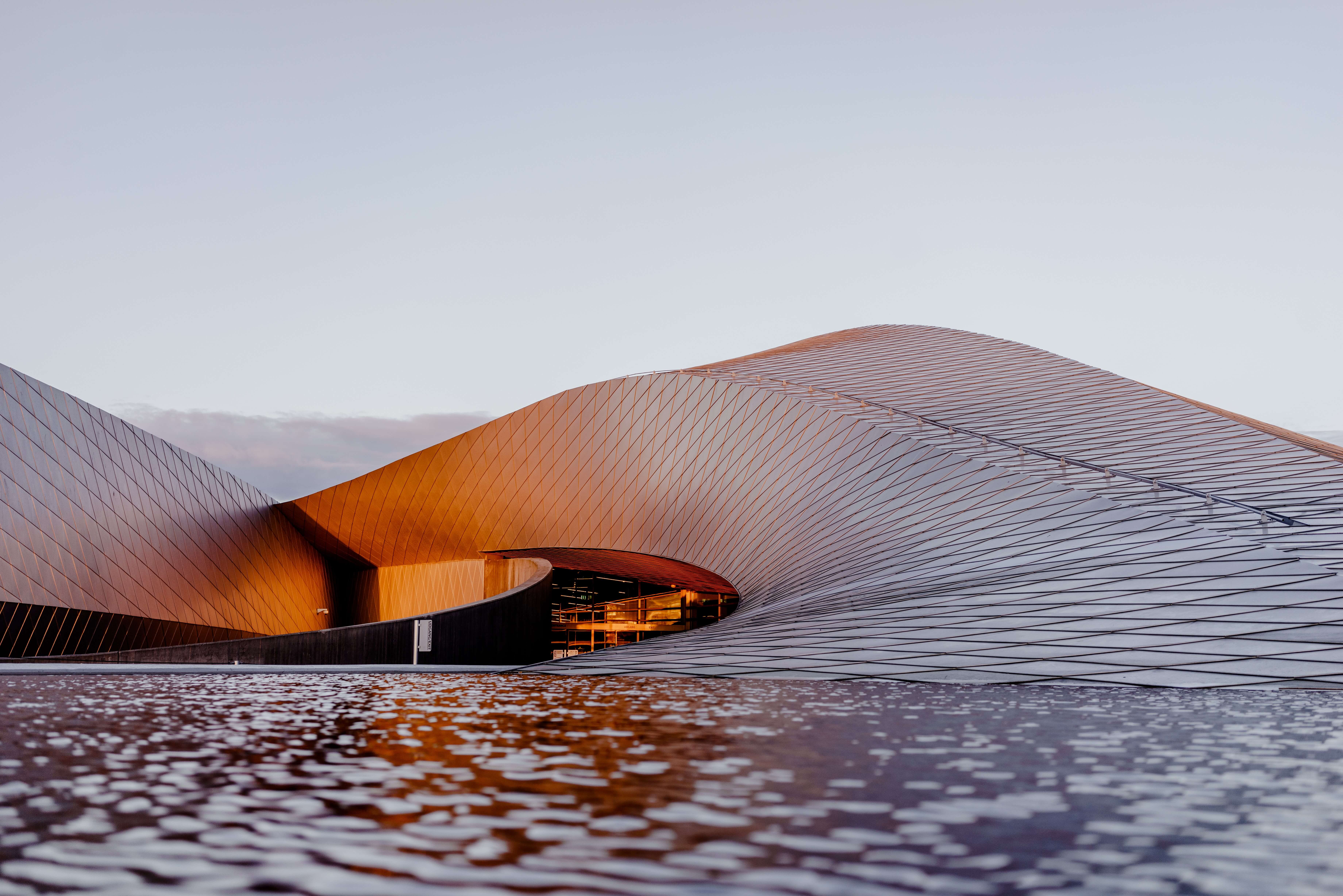Architecture and engineering are closely linked since it is through architecture that technical projects are planned and overseen with a view to bringing different construction solutions to life. A prime example of this can be seen in the construction of bridges. This typology, somewhere between architecture and engineering, has been ever-present throughout history from a myriad of perspectives. In this way, it is possible to gain an understanding of the stylistic and social journey through bridges or aqueducts around the world.
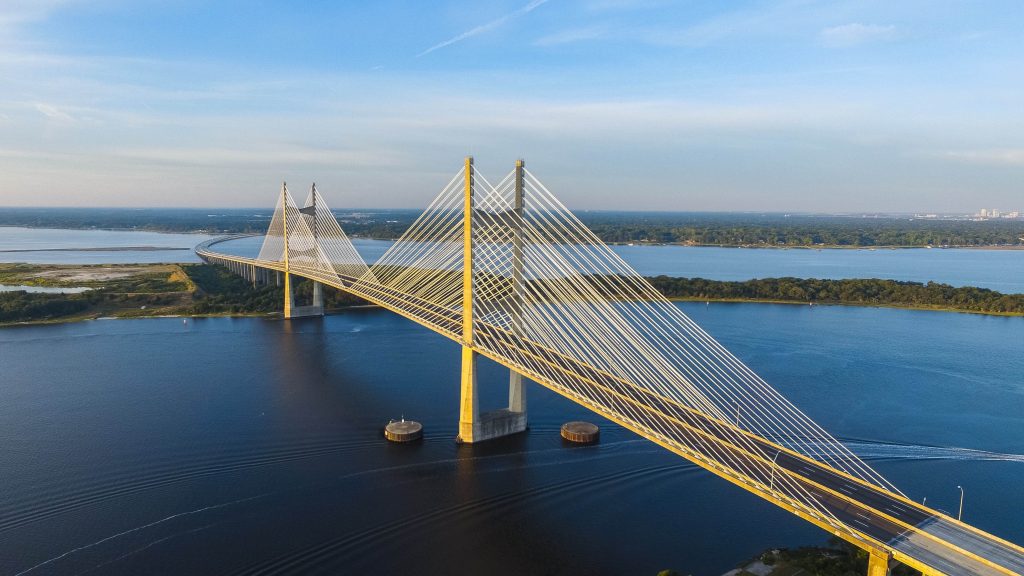
Illustration 1 Photo by Lance Asper on Unsplash
A historical reflection that has prevailed to the present day through contemporary constructions with their own special features. Nowadays, building bridges and viaducts is also an artistic, aesthetic and social activity. While the raison d’être is always to devise a technical solution to a land communication issue.
But what are they like today? And what technical difficulties do they pose? In this article, we provide two specific examples of how the aesthetic and the technical are related from an architectural perspective.
Technical aspects of bridge and viaduct construction
Building bridges and viaducts is conditioned on developments in technical know-how of engineers. It also depends on emergence of new materials such as reinforced or prestressed concrete and structural steel. Thus, throughout history, technical developments have resulted in bridges and viaducts being built that would have otherwise seemed impossible.
The main difference between a bridge and a viaduct must be kept in mind. While the former overcomes an obstacle without closing its path underneath, viaducts connect several bridges through reinforced concrete structures. Bear in mind that all viaducts are bridges, however, not all bridges are viaducts.
The biggest problems encountered in the construction of bridges and viaducts lie in physics. Phenomena such as resonance and influence of vibration from wind pressure, aerodynamic self-excitation or aeroelasticity are crucial in building design if constructions are to be safe. An example of this is the collapse of the Tacoma Narrows Bridge in 1940.
One thing is certain: building this type of construction involves specific technical details. These include physical supervision of atmospheric conditions, use of suitable materials, and the load they will bear.
A recent construction that pushes the limits can be seen in the Millau Viaduct (France), considered a masterpiece of contemporary engineering.
Millau Viaduct, France.
Michel Virlogeux
Michel Virlogeux, a French civil engineer and expert in bridges and viaducts, was entrusted with designing a cable-stayed bridge across the Tarn valley. The Millau Viaduct joins the Causse Rouge and the Causse du Larzac, through a 2.5 kilometres long and 343 metres high structure.
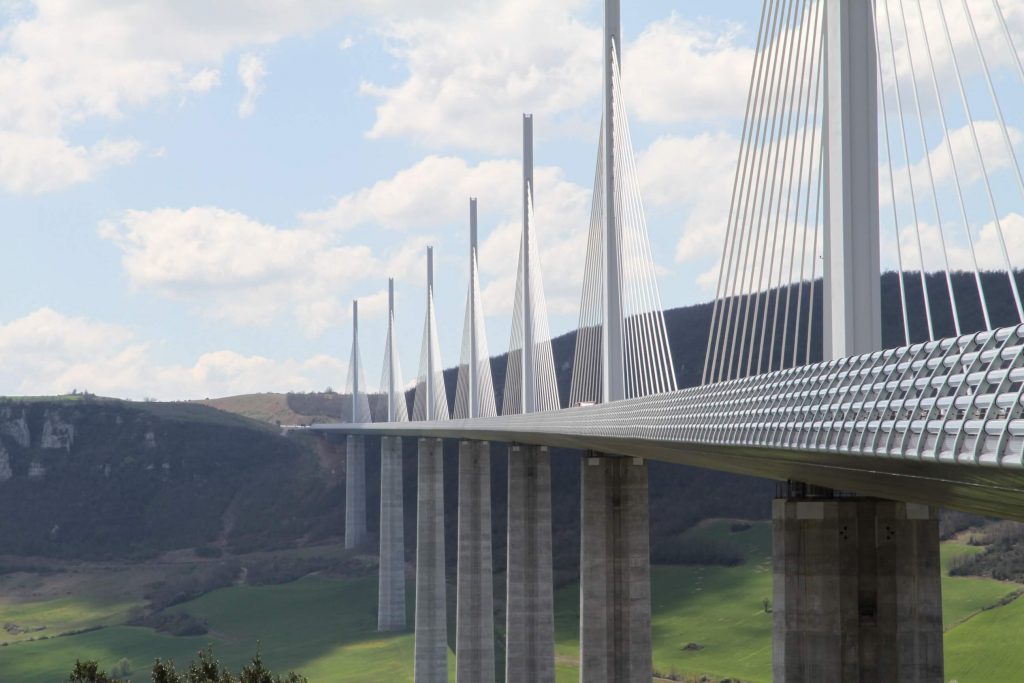
Illustration 2 Millau Viaduct / Photo by Luca Onniboni on Unsplash
Michel Virlogeux and Norman Foster
Inaugurated in 2004, the Millau Viaduct posed one of the biggest bridge-building challenges France had ever seen. Michel Virlogeux, accompanied by the renowned British architect Norman Foster and the Dutch engineering firm Arcadis, came up with a stunning conceptual and structural design.
Seven steel pylons, each weighing 700 tonnes, were erected during its construction. Each of these pillars had a different height due to the geological conditions of the Valley area. What’s more, the distance between the pillars was considerable. This posed an enormous construction challenge. It was resolved by creating steel support towers up to 170 metres high.
However, in order to connect both sides of the road, hydraulic rams had to be used. This system uses kinetic energy through a hydraulic pump. In this way the water hammer impact on a fluid raises it to a higher level. In this way, both sides were pushed together to achieve convergence between the two sides of the road.
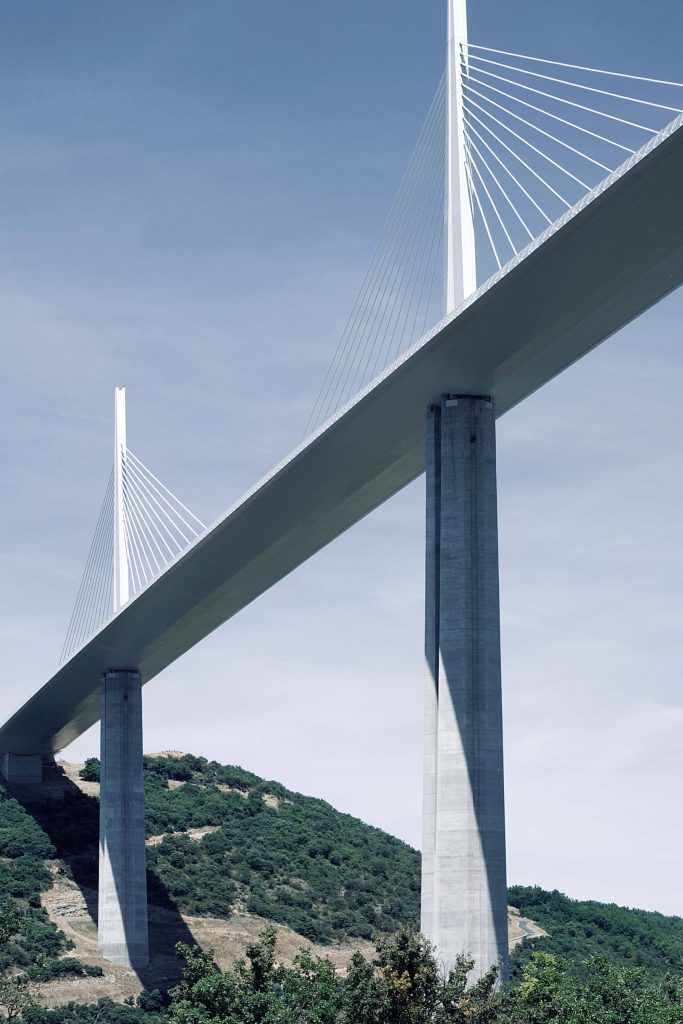
Illustration 3 Millau Viaduct / Photo by Sies Kranen on Unsplash
This example has become one of the great landmarks of modern engineering. This is not to forget the aesthetic aspect and the way the infrastructure architecture has significantly impacted the landscape. In this way, Norman Foster’s studio provided a light and transparent elegant morphology profile to the structure, bringing together functionality, technology and aesthetics.
An aesthetic that is necessary in other projects such as the Cirkelbroen in Copenhagen, a bridge that stands out as an aesthetic alternative with a strong urban component.
Cirkelbroen, Copenhagen (Denmark)
Olafur Eliasson
Aside from technical aspects, there is a less decisive aspect to building infrastructure of this kind. Nevertheless, it provides an interesting alternative regarding the synergy between urban planning, public space and architecture. In the case of Cirkelbroen it is wrapped in an aesthetic-urban connotation as it is designed by the renowned and award-winning Danish artist, Olafur Eliasson.

Illustration 4 Photo by Thomas Peham on Unsplash / the rooftop of the Aarhus Museum of Modern Art – AroS in Denmark
Eliasson’s artistic work is involves large-scale installations. He uses elements such as light and water, in contrast to the air temperature. This resource offers a surprising factor to the observer. One of his most renowned works is Your Rainbow Panorama, a work of art created on the rooftop of the Aarhus Museum of Modern Art – AroS in Denmark.
Cirkelbroen, a zig zagging path
In Cirkelbroen, the Danish artist proposes a communicative solution through human introspection on how to inhabit the city. It departs from a linear structure, forming a zigzag. A break is necessary given the arrangement of five equal-sized circular platforms. These give the bridge its name.
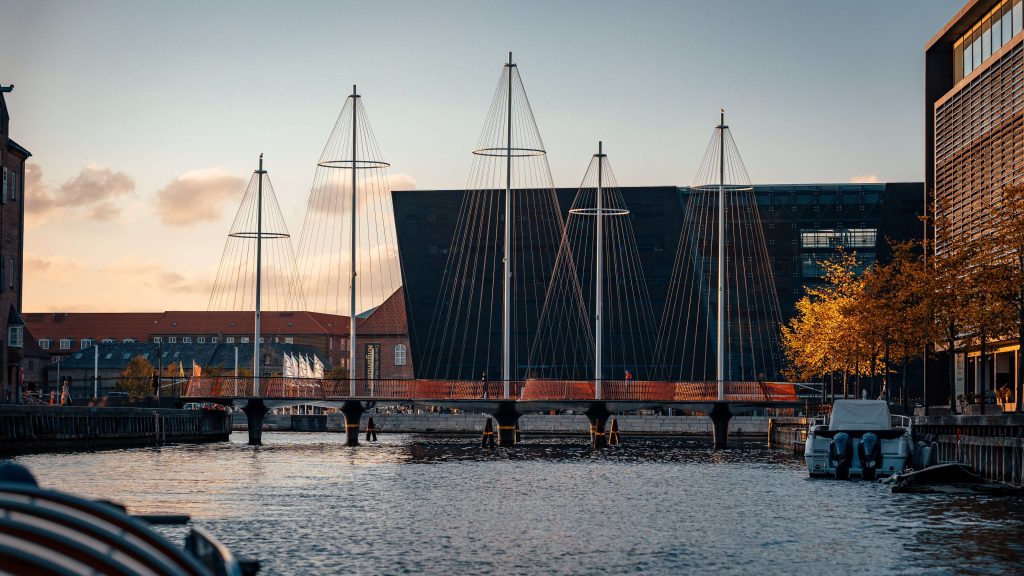
Illustration 5 Cirkelbroen, Olafur Eliasson / Photo by Razvan Mirel on Unsplash
Built to connect Christiansbro and Appelbys Plads, Cirkelbroen is an example of how art, design and aesthetics merge with engineering. On the one hand, its conceptual nature is aligned with Copenhagen’s shipping tradition. While on a technical level, its elegance is evident in the detailed opening of the platforms when ships pass through.
The bridge maintains a human perspective, as it rises up to give importance to the social encounter. Through the walk, pedestrians are invited to take in the breathtaking panoramic views from a different perspective.
“In Denmark, there is a strong tradition of focusing on inclusion, on accepting other people: being open to ideas we have not yet had, people we have not yet met and unpredictable encounters. This is something we all have to work on together, and one way to address this is how we design public space. Cirkelbroen will, I hope, play its part in improving the quality of life and the development of a hospitable and inclusive city.”
Olafur Eliasson on the design of Cirkelbroen.
Therefore, Cirklebroen stands out as an example of the tendency towards new perspectives in civil construction, where architecture and engineering are related to other more conceptual points of view such as the artistic, humanistic, sociological, etc.

